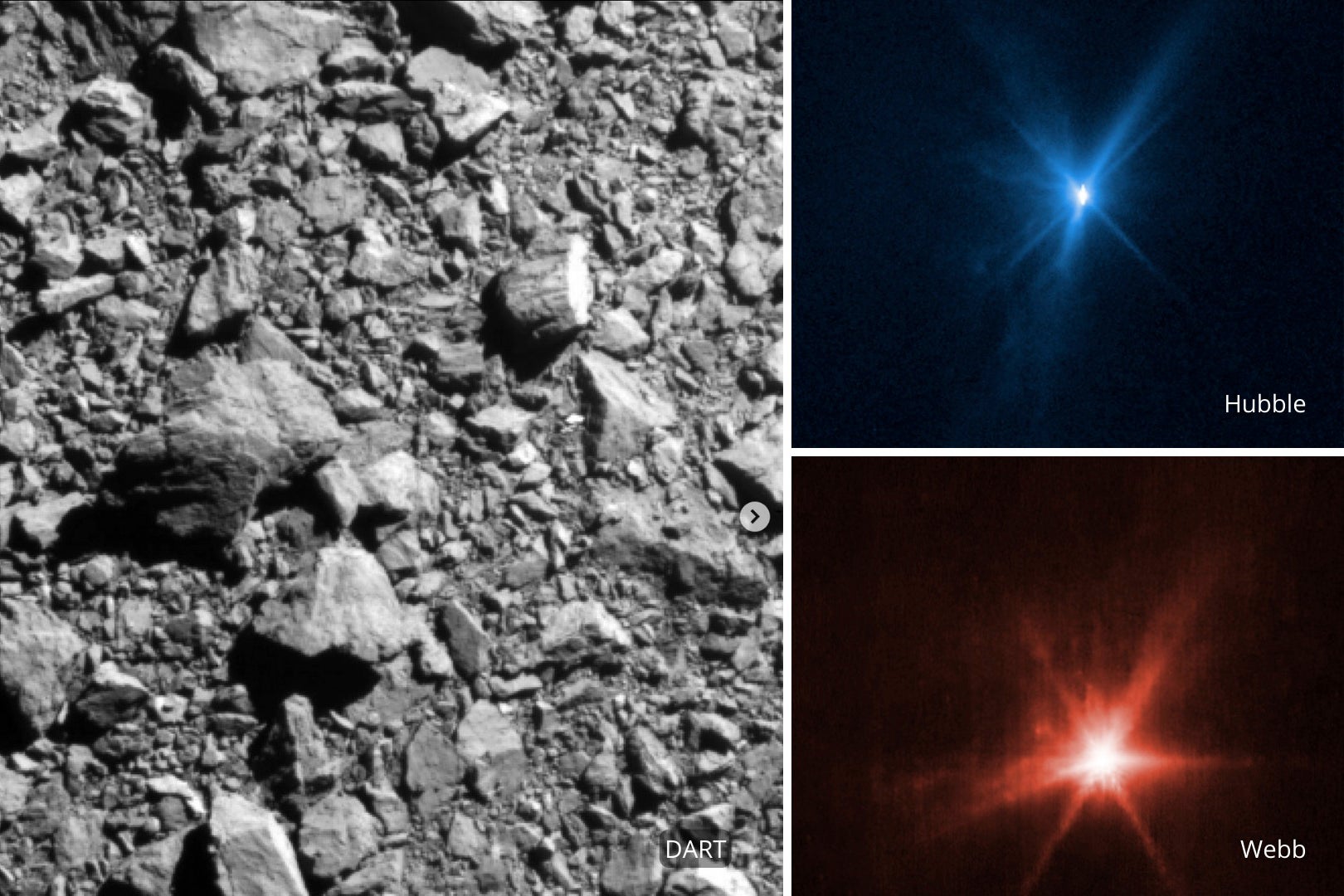Space telescopes capture asteroid slam with striking clarity
Two space telescopes have captured this week's asteroid strike, the first planetary defense test of its kind

Your support helps us to tell the story
From reproductive rights to climate change to Big Tech, The Independent is on the ground when the story is developing. Whether it's investigating the financials of Elon Musk's pro-Trump PAC or producing our latest documentary, 'The A Word', which shines a light on the American women fighting for reproductive rights, we know how important it is to parse out the facts from the messaging.
At such a critical moment in US history, we need reporters on the ground. Your donation allows us to keep sending journalists to speak to both sides of the story.
The Independent is trusted by Americans across the entire political spectrum. And unlike many other quality news outlets, we choose not to lock Americans out of our reporting and analysis with paywalls. We believe quality journalism should be available to everyone, paid for by those who can afford it.
Your support makes all the difference.The world now has stunning new photos of this week’s asteroid strike, the first planetary defense test of its kind.
NASA on Thursday released pictures of the dramatic event taken by the Hubble and Webb space telescopes.
Telescopes on all seven continents also watched as NASA’s Dart spacecraft slammed Monday into the harmless space rock, 7 million miles (11 million kilometers) from Earth, in hopes of altering its orbit.
Scientists won't know the precise change until November; the demo results are expected to instill confidence in using the technique against a killer asteroid headed our way one day.
“This is an unprecedented view of an unprecedented event,” Johns Hopkins University planetary astronomer and mission leader Andy Rivkin said in a statement.
All these pictures will help scientists learn more about the little asteroid Dimorphos, which took the punch and ended up with a sizable crater. The impact sent streams of rock and dirt hurling into space, appearing as bright emanating rays in the latest photos.
The brightness of this double asteroid system — the 525-foot (160-meter) Dimorphos is actually the moonlet around a bigger asteroid — tripled after the impact as seen in the Hubble images, according to NASA.
Hubble and Webb will keep observing Dimorphos and its large companion Didymos over the next several weeks.
The $325 million Dart mission was launched last year. The spacecraft was built and managed by Johns Hopkins’ Applied Physics Laboratory in Laurel, Maryland.
______
The Associated Press Health and Science Department receives support from the Howard Hughes Medical Institute’s Department of Science Education. The AP is solely responsible for all content.